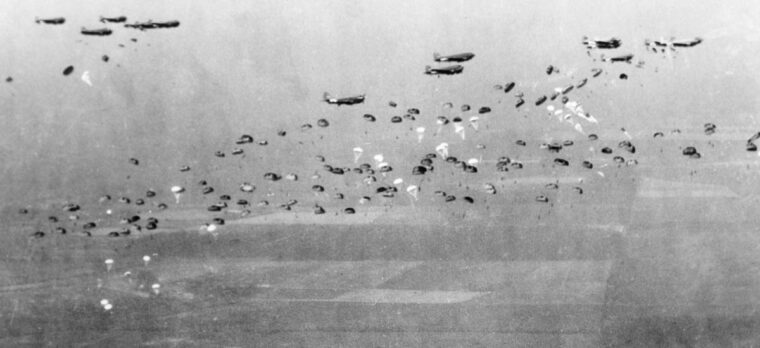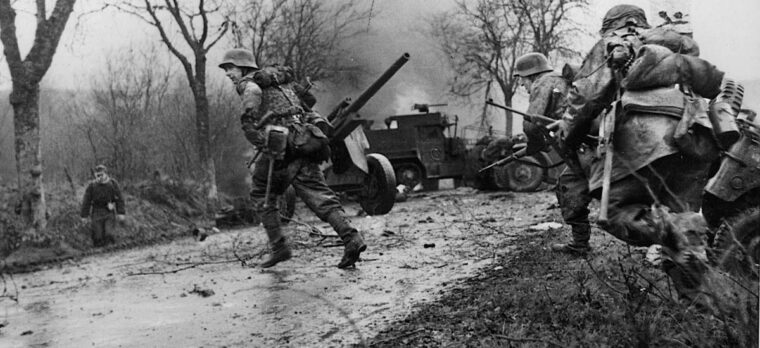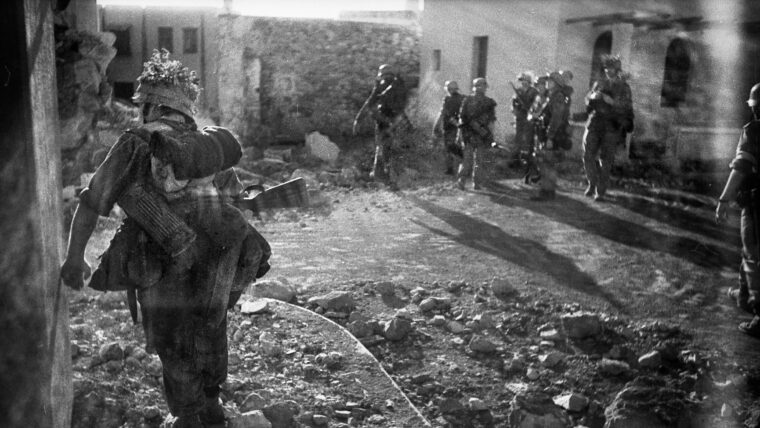
European Theater
American Women Answered the Call of Duty
By Susan ZimmermanOn December 7, 1941, Japan bombed Pearl Harbor. The next day, the United States declared war on the Empire of Japan, and the following day President Franklin D. Read more

The European Theater of Operations (ETO) during World War II is generally regarded as the area of military confrontation between the Allied powers and Nazi Germany and Fascist Italy. The European Theater encompassed the Atlantic, Mediterranean, Eastern Front, Western Front, and Arctic areas of operation.

European Theater
On December 7, 1941, Japan bombed Pearl Harbor. The next day, the United States declared war on the Empire of Japan, and the following day President Franklin D. Read more

European Theater
At dusk on August 24, 1944, south of Paris, about half a mile from Croix de Berny crossroads, stood a tall, lanky man tapping a malacca cane. Read more

European Theater
It was March 14, 1944, and Private Albert “Albie” Duddy of D Company, 1st/4th Battalion Essex Regiment, was staring up at the monastery on top of the hill at Monte Cassino from a location north of the town of Cassino, Italy. Read more

European Theater
In the minds of many military enthusiasts, there was only one bomber in the United States inventory during World War II. Read more

European Theater
“Dead Man’s Corner,”at a road junction south of Saint-Côme-du-Mont, has become one of Normandy’s most famous landmarks. Read more

European Theater
In Eisenhower’s Lieutenants, eminent historian Stanley Weintraub wrote that communications in the 1800s between America’s scattered frontier garrisons were slow, which encouraged a tradition of individual initiative in the American army. Read more

European Theater
By Duane Schultz
The men who were prisoners of war during World War II paid a terrible price in the form of PTSD—post-traumatic stress disorder. Read more

European Theater
In the autumn of 1944, even before the failure of Operation Market Garden, the eyes of Allied commanders were on the great Rhine River, and when the time came to cross the last major natural barrier on the German frontier, American airborne troops would play a key role, while also participating in other operations during the last days of World War II. Read more

European Theater
By Patrick J. Chaisson
The chief shuffled to his seat in the underground conference room. He sat down heavily, eyes unfocused and dreamy, while a litany of woes was read to him. Read more

European Theater
The easternmost Allied landing beach of the Normandy invasion of June 6, 1944, was code-named Sword. It was the responsibility of British Maj. Read more

European Theater
High over Normandy, France, eight paratroopers of the 82nd Airborne Division charged out the rear door of their C-47 Skytrain aircraft. Read more

European Theater
A column of American M-4 Sherman medium tanks moved through Dison, Belgium, in late summer 1944, near the city of Liege. Read more

European Theater
Short, slightly built, baby-faced, and soft-spoken, Audie L. Murphy of Texas was far removed from the popular image of a warrior or hero. Read more

European Theater
Adolf Galland stroked his well- groomed mustache as he strode confidentially toward his distinctive Messerschmitt Me-109E with its brightly painted fuselage art featuring Mickey Mouse smoking a cigar and wielding a hatchet. Read more

European Theater
By Alan Davidge
In the early hours of June 6, 1944, a 20-year-old German soldier hurried to his post at Wiederstandsnest 62 (WN62) overlooking Omaha Beach to man his MG 42 machine gun. Read more

European Theater
Marshall B. Haugen was born July 8, 1917, and raised in Duluth, Minnesota—one of four brothers, all of whom served in the U.S. Read more

European Theater
Major George Jellicoe, head of Britain’s Special Boat Squadron, made a last-minute check on his parachute harness to see if all was ready. Read more

European Theater
In 1940, existing U.S. Army tactical doctrine called for a cordon of towed antitank guns to defend against an enemy tank attack, but army planners studying the Battle of France in May of that year realized that a tactical plan of that nature was outdated and likely would not thwart a large-scale armor attack. Read more

European Theater
BACK STORY: The author has always had a soft spot for the story of the Mulberries. His mother, who was a skilled maker of wedding dresses in London, was conscripted to learn welding and sent to Jones’ Cranes, at Letchworth, just north of the capital city. Read more

European Theater
The Battle of the Bulge lasted from December 16, 1944, until January 25, 1945, and stands as one of the classic stories of true grit and defiance against a strong and determined enemy. Read more